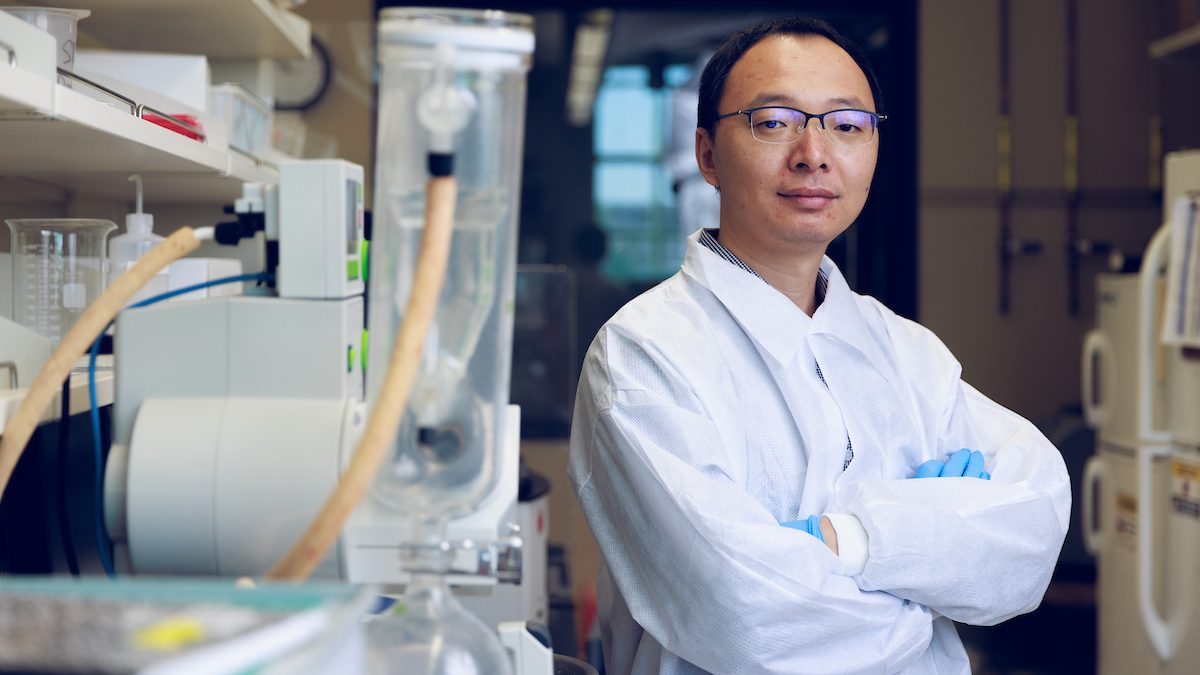In an effort to develop a new treatment for severe pain without addictive opioids and improve relief for millions who rely on regular nerve-block injections, research led by The University of Alabama is exploring minuscule doses of a potent toxin.
Two projects supported by approximately $3 million from the National Institutes of Health will allow researchers to develop formulations of the toxin, tetrodotoxin, or TTX, and test them for effectiveness.
One project aims to relieve regional post-operative pain or intermittent chronic pain by injecting encapsulated TTX so patients could apply cold treatment to activate relief as needed. The other project hopes to formulate TTX into nanoparticles as a local anesthetic that continuously relieves post-operative pain or persistent chronic pain.
Both proposed treatments rely on tiny doses of TTX to eliminate serious side effects. TTX is about 1,000 times the potency of conventional local anesthetics and 3,000 times that of morphine.
“Compared to existing local anesthetics and opioids, TTX has advantages and is expected to be a more powerful pain control drug,” said Dr. Chao Zhao, assistant professor of chemical and biological engineering leading the projects. “Our research aims to safely use TTX to treat pain by releasing it at a concentration that blocks nerves while being far below toxic levels.”
Zhao is part of the Center for Convergent Bioscience and Medicine at UA that has a focus on nanomedicine, which broadly aims to deliver drugs more effectively to the body using particles one-billionth the size of a meter.
TTX is not used as a treatment for pain and is normally avoided by humans. Made by certain bacteria, it is commonly found in an order of fish living in the ocean waters around eastern Asia. In Japan, for instance, the seafood delicacy pufferfish can be poisonous if the liver, where TTX accumulates, is not cut out before serving.
However, its therapeutic use has long been sought. Ancient Chinese medicine manuscripts offered guidance on how to lessen the toxicity of pufferfish eggs in water to use as part of a tonic. More recently, TTX has been explored as a treatment for pain, yet only one study has advanced to a human trial to treat pain in cancer patients.
TTX blocks nerve function in humans, by inhibiting the firing of action potentials in nerve cells. In large doses it stops nerves from firing muscle movement, causing death without treatment, but biomedical researchers hope a little bit of TTX can go a long way for pain relief.
The project targeting reoccurring pain would wrap small doses of TTX in a material injected at the pain site. The material would dissolve when cooled, triggered externally through ice packs or other chilled objects by the patient when pain is present. When not triggered, the material wrapped TTX should lie dormant.
Not only would this use the novel therapy of TTX, but the project is trying to achieve on-demand local anesthesia that allows patients to self-adjust pain relief after surgery or for chronic pain. There is currently no on-demand local anesthesia in clinical practice.
“The ultimate goal is for patients to receive injections from healthcare providers at the hospital, and then they go home to self-manage their pain,” Zhao said. “When the pain intensity flares up, patients can treat the painful area with ice to relieve the pain.”
This approach aims to allow patients to adjust the degree of pain relief according to their changing needs and conditions and minimize the need for the administration of systemic analgesic medications such as opioids.
The research group will develop a large library of the materials used to encapsulate TTX, or polymersomes, to find the best to store TTX and dissolve chilled. The best candidates will be tested in rats to evaluate effectiveness and potential side effects.
The project targeting post-operative pain would be active upon injection. TTX will be bonded onto a polymer and formed into a nanoparticle that can penetrate the nerve, something Zhao’s research has shown is possible, and act as a drug depot that continuously releases TTX as pain relief.
Current local anesthetics do not lodge inside the nerve as efficiently as this project proposes to do with TTX nanoparticles. It’s hoped this more effective treatment will last up to two weeks, much longer than current local anesthesia approaches that often lose efficacy after 5 days.
The support for the research comes from the two NIH grant programs, formally called R01 and R61 grants.
For the project, Zhao has partnered with Dr. Ursula Wesselmann, the William A. Lell, M.D–Paul N. Samuelson, M.D. Endowed Professor in Anesthesiology at The University of Alabama at Birmingham, and Dr. Tony Yaksh, professor of anesthesiology and pharmacology at the University of California, San Diego.
Contact
Adam Jones, UA Strategic Communications, 205-348-4328, adam.jones@ua.edu
